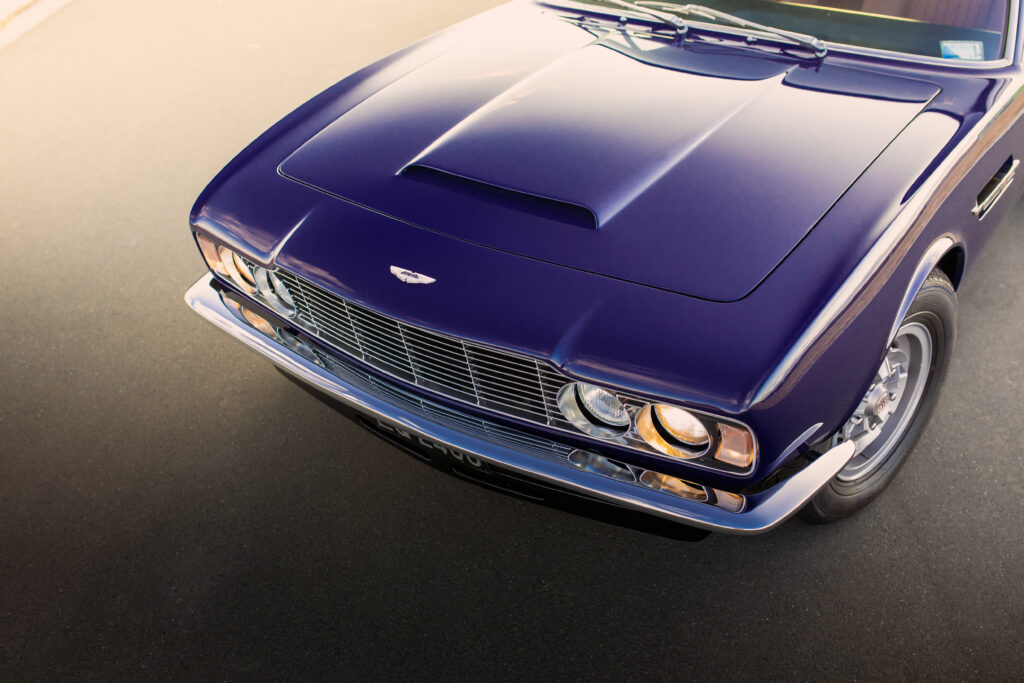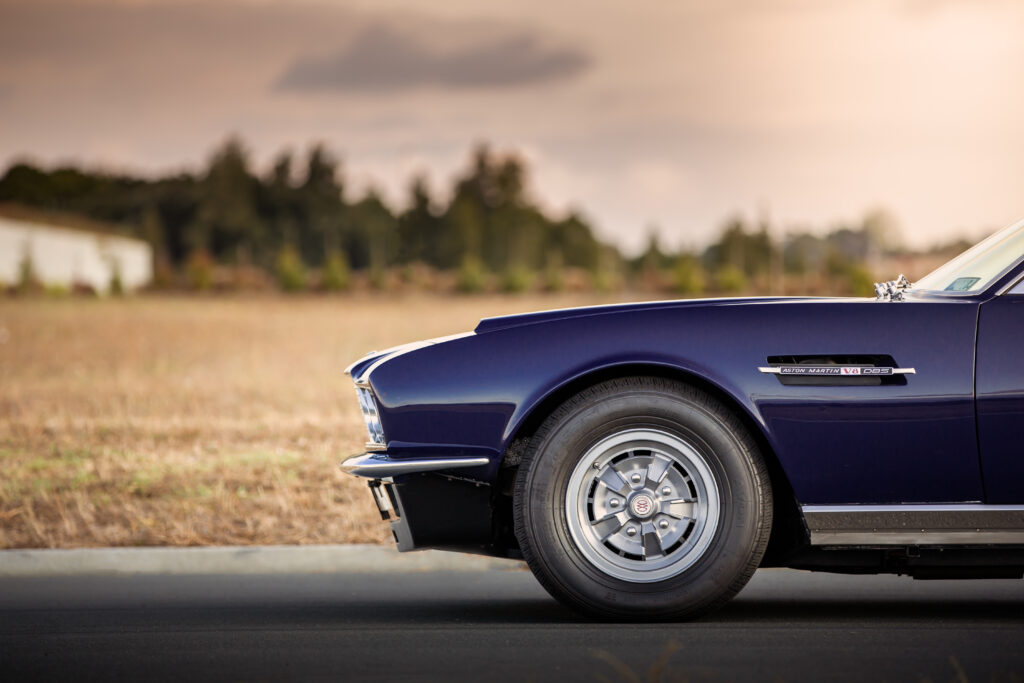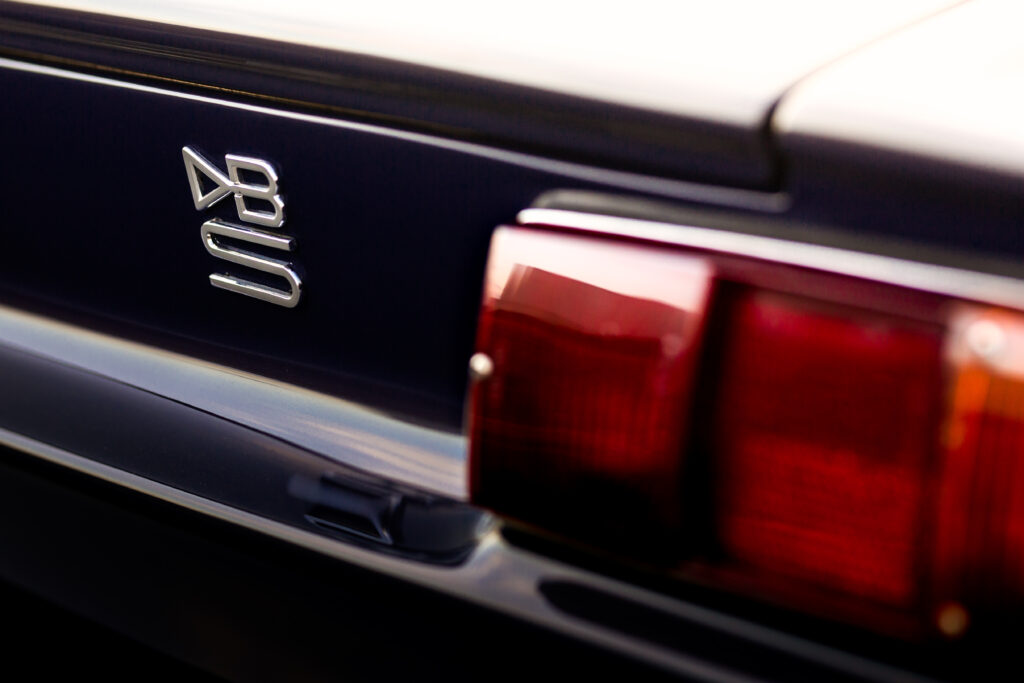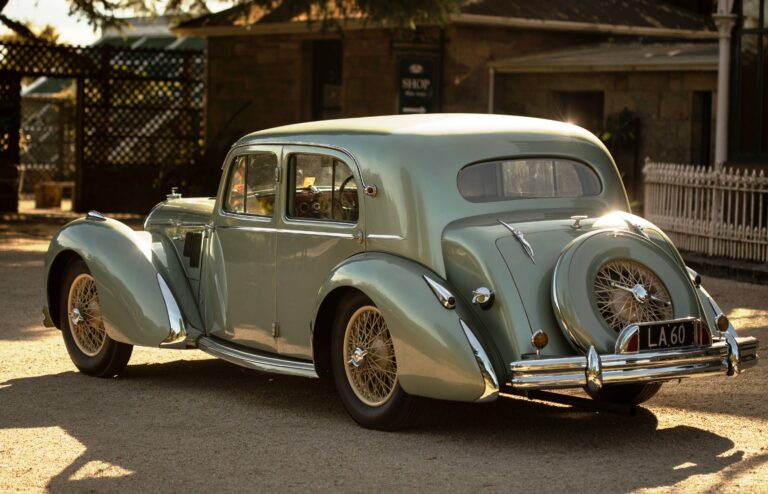This DBS V8 got into the Bond-equivalent position of being strapped naked to a chair while an evil mastermind took a swing at its swingers but, in the finest tradition, it turned out alright in the end
By Ian Parkes
Photographs: Richard Opie
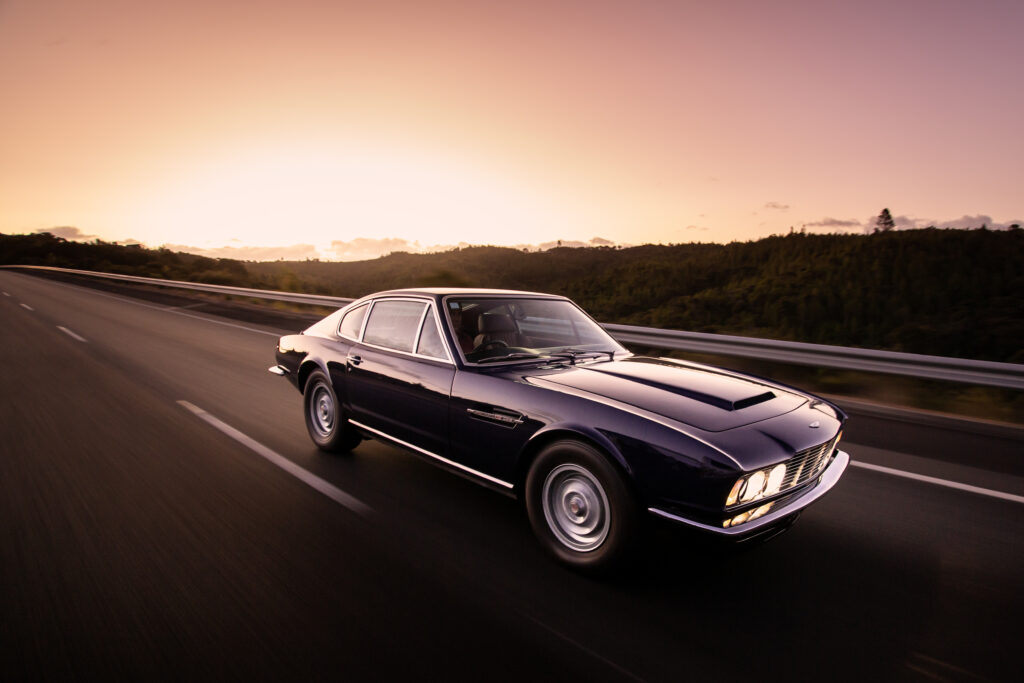
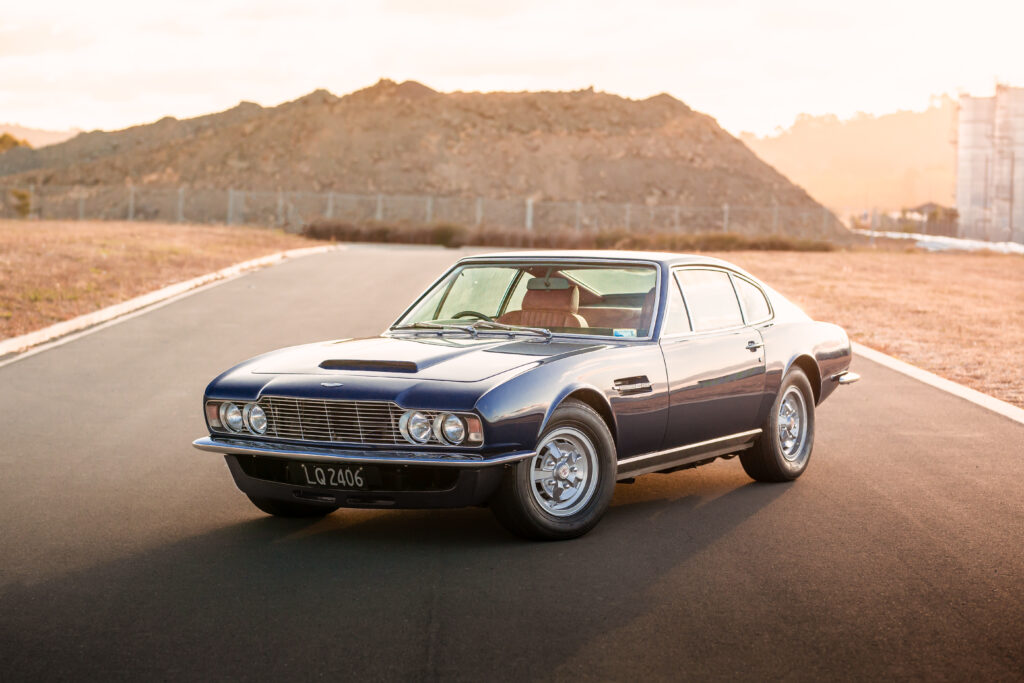
Martyn Jagusch didn’t intend to carry out a ground-up restoration on his 1971 Aston Martin DBS V8. Yet one glance at the car’s pristine condition shows he definitely changed his mind — or had it changed for him, which is nearer the truth.
The Aston Martin DBS V8 is a handsome car that only looks better with age. Enthusiasm for Aston’s earlier cars, especially the James Bond-era DB5 and the earlier super-sexy Zagato models, has been skyrocketing for years but appreciation for these larger and less iconic GT cars languished for a time. The V8 is less well recognized as a Bond car even though George Lazenby drove one in On Her Majesty’s Secret Service in 1969 as did Timothy Dalton in The Living Daylights (1987). However, the car is probably best remembered as Lord Brett Sinclair’s car in The Persuaders!, a ’70s TV series that ran for just two seasons, starring Roger Moore and a Dino 246 GT-mounted Tony Curtis.
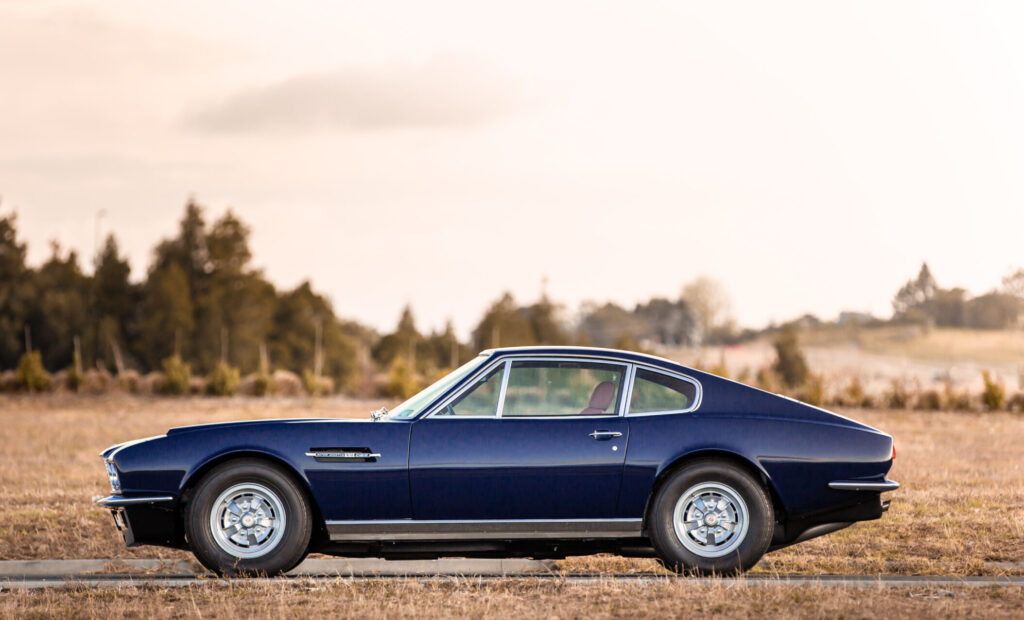
Getting better with age
Martyn has owned his car since 2003. The decision to buy it then looks like a very wise choice now. Back then, while the badge still had the old magic, the cars themselves were seen as rather ponderous and thirsty old-timers, with antique ergonomics running on uninspiring mechanicals.
It’s interesting to realize that the lines are now acquiring a distinctive ’70s elegance and character. Although those lines were drawn by the legendary William Towns, the car’s thin pillars and subtle curves add a bit of Italian finesse to its American muscle car–influenced proportions. And let’s not forget these cars were hand built in a way that today’s Aston Martins cannot claim.
So what was it about this British bruiser that appealed to Martyn, who can also be found piloting more modern Porsches and BMWs about town and at track days?
It was young love. Martyn has known this car for almost all of its life in New Zealand. The father of a friend of Martyn’s imported it in late 1983, a man who also owned a Ferrari 365 GT4. The two lucky lads were allowed to take the two cars out on the weekend for runs along the northern motorway, which in those days ended not far past the Harbour Bridge at Tristram Avenue. Martyn’s dad had owned Valiants, and Martyn says at the time he thought the E49 Charger was the hottest car on the road. The Aston’s stance was similar to the E49’s, only better.
“I just fell in love with it,” explains Martyn.
Each year the boys also took both cars to the Ellerslie Car Show, where they would go on display with others in their respective car clubs.
“I’d always look forward to that, to be able to drive the Aston there,” says Martyn.
As time marched on Aston Martin’s classic ’70s V8 was supplanted by the dramatic new DB7, which ushered in the modern era of tauter, sportier Aston Martins and made the DBS look instantly old-fashioned.
Martyn still had a soft spot for it, though. He asked his friend’s dad, Tony Parsons, to call him if he ever wanted to sell it. Tony took some time to come around to the idea.
“Twice I’d been around there to pick up the car and twice he’d said, ‘Look Martyn, I just don’t think I can let it go’.”
Martyn had an ally on the inside, though. Some time later Tony’s wife, Mary, who had decided it really was time to move it on, called him up. She told him Tony was away and asked to come and collect the car.
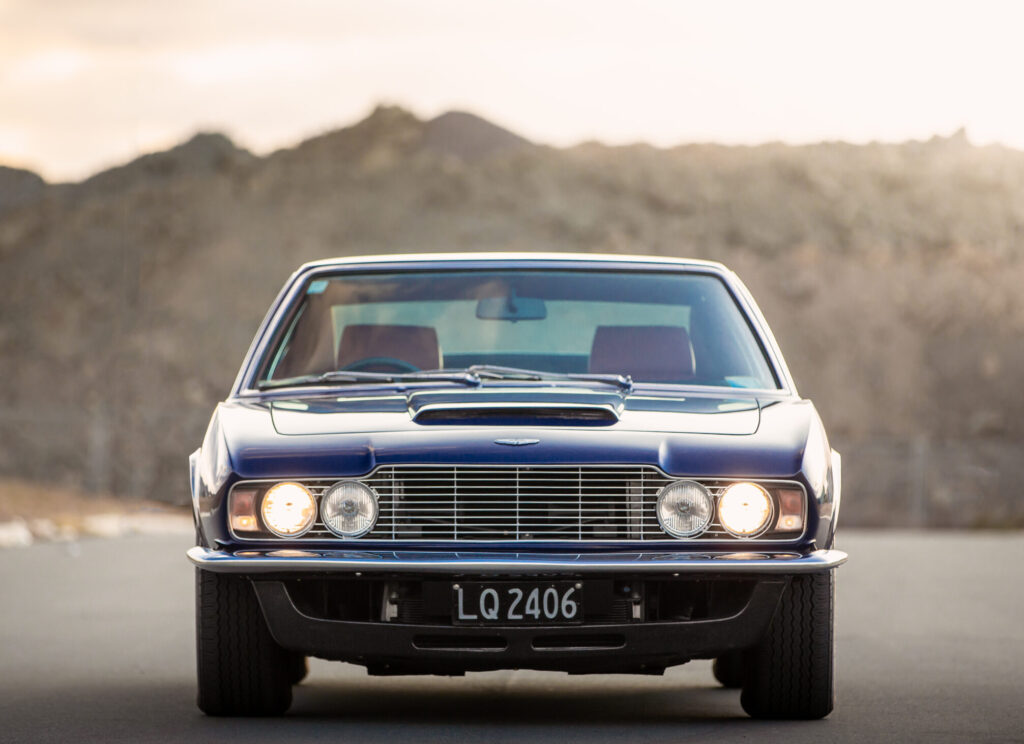
Third time lucky
As this would be his third attempt, Martyn didn’t need asking twice. A couple of weeks later, a sheepish Tony called and said they had better discuss the Aston. As Mary had short-circuited Tony’s ‘letting go’ problem, Martyn and Tony were finally able to agree a price. A little over $30,000 wasn’t exactly cheap in 2003, but these cars were considered to be almost relics of a time when the carmaker was going through a series of different financial backing arrangements. They had Mk3 GT Cortina–style headlights, Austin door handles, actual Hillman Hunter — another Towns design— tail light clusters, and evidence of other locally sourced parts.
Tractor and machine tool company David Brown had bought into the company in 1947 and in 1972 David Brown paid off all of its debts but the new management company, up against America’s emissions regulations, couldn’t prevent it going into receivership in 1974. The factory was closed but reopened six months later. The model struggled on, as did the company under a Byzantine succession of ownership partnerships until Aston Martin fell, gratefully, into Ford’s hands in 1991. Ford provided the resources necessary to develop the svelte new DB7, announced two years later. That car made the V8 models look a bit of an outlier on the Aston development tree.
Martyn was happy, though. He was determined to keep the car he had coveted as original as possible, if he could just make it more reliable and usable. After all it was a five-speed manual, and almost all of the cars made in its 20-year production run from 1969 to 1989 were three-speed autos. Martyn enjoyed driving it as a classic GT counterpoint to his Porsche 911.

Rotten luck
In 2012, Martyn asked long-time associate Mike Clements to sort out a brake-binding problem. That was eventually traced to a blockage on one side of a Y-junction in the rear brake line that wasn’t allowing fluid to return. However, when Mike was fixing the brake line back to the chassis, the screw, and the end of the screwdriver with it, drove straight through into the chassis. He tried to fix it in another spot, with a similar result.
Martyn says his first inkling of trouble ahead came in the form of a call from Tony Katterns at Custom Metalshapers (now Automotive Developments) in East Tamaki, inviting him to come and take a look at his car. As Martyn was expecting to get his car back shortly, with the brakes fixed, he was surprised — to say the least — to hear a metal fabricator suggesting he come and take a look at it. Tony invited him to decide whether he wanted his car put back together.
These Aston Martins have hand-formed aluminium bodies on a steel chassis. The stainless steel sill cappings looked sturdy but underneath — “It was rotten,” says Martyn.
More stripping of the chassis was ordered to get to the bottom of the problem. It was indeed a big problem. Tony estimated it would cost about $80,000 to fix it up.
Martyn admits to being rocked by the cost but eventually reasoned that, if the bills were spread out, he could live with it. He decided to give the car a proper birthday that would coincide with his 50th, which would roll around in a couple of years. The stripped-down and repaired chassis would have to go to another craftsman, John Lisle at Cascade Auto Finish, for a full rotisserie. That was just the start.
“It cost over $200,000,” says Martyn.
It also took five years. At least the longer time frame gave Martyn time to come to terms with and pay the extra cost. Some of the increase came from increases in charge-out rates, which have multiplied over time, but most had to do with scope creep.
“It worked out well,” Martyn says, “although at one time the car was costing me about $5000 a week.”
It must have been love.
Once the chassis was done the car went back to Tony to set up the body and reassemble.
“These cars are hand built; if you look at pictures even the height and the shape and the degree of the body creases vary,” he said. “We had to decide what we wanted.”
The windscreen looked fine, just the beginnings of a bit of fogging in two corners, but Tony got talking to a supplier, who said he had one — a snip at $800.
“The only problem was, it didn’t fit. Again, that was because they are all different. I still don’t know what they did to make it fit and I don’t want to know,” admits Martyn.
The final fairing at Cascade Auto Finish took that bill to $40,000 but the result is superb. The crease through the middle is oh so subtle and the telltale reflections in its flanks are spookily free of distortion. Before then, though, Tony had taken a break from his business, and Martyn’s Aston, along with other long-term projects, languished. Two people who had worked on the car left Custom Metalshapers and formed their own business, R3 Fabrications, and they offered to carry on with it. Martyn was happy with this, although the process wasn’t as straightforward as this suggests. Martyn says the chassis went from CMS to Cascade’s for rotisserie, then back to CMS, then back to Cascade’s for final paint, then to CMS, then to R3 for final reassembly. The final paint bill was $40K — of which less than $5K was for materials.
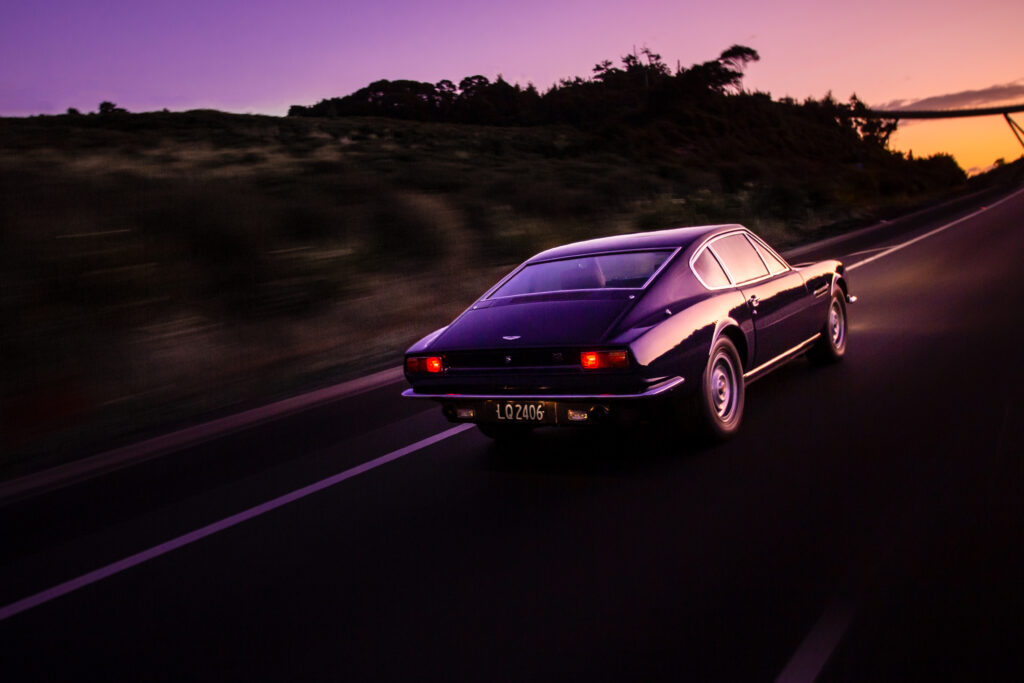
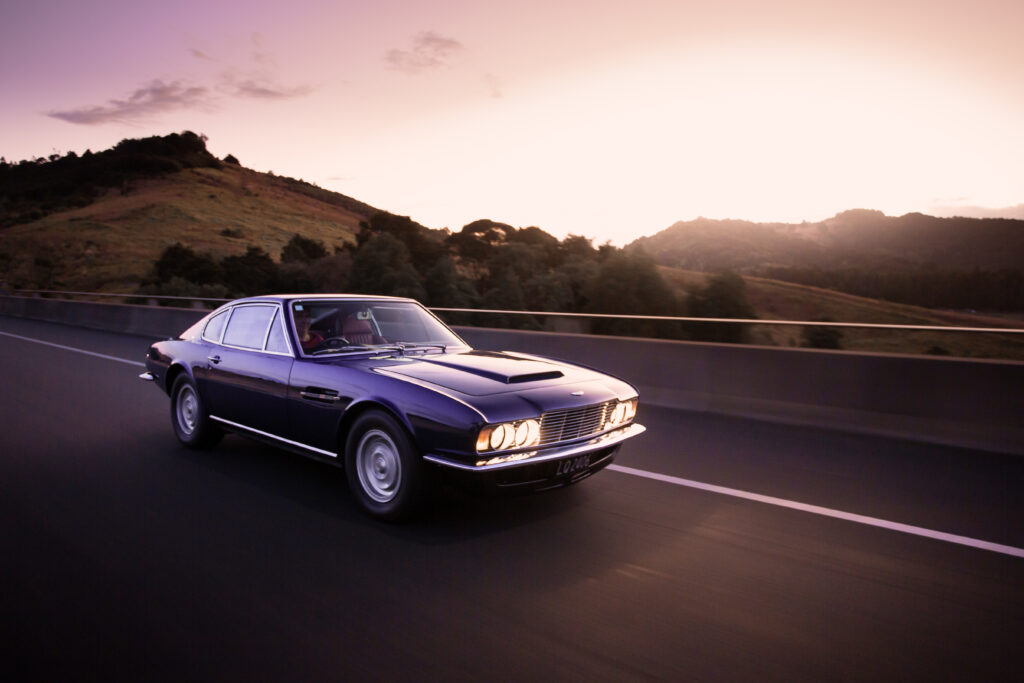
Shiny bits
As Greg Wells and Glenn Ingram had taken the car apart, Martyn had been adamant Greg and Glenn should put it together again. Greg pointed out that the front seats’ chrome hinges were rough to the touch. The four hinges cost $1000 each to dismantle and rechrome. Then Greg suggested he come and look at the bumpers. Martyn said he didn’t want to look as these invitations were always bad news. Anyway, he knew the bumpers were fine — immaculate even. Having reassured himself, Martyn went in to look. Yes, perfectly fine — until Greg persuaded him to look along them. Sure enough, they were ever so slightly rippled. Martyn said something rude to Greg and got out the cheque book again.
He says he spent $20,000 on rechroming every bit of chrome on the car. To retrim the interior he ordered seven hides from Scotland at $1000 each, but Stu’s Trim and Sound did them justice. They also persuaded him to fit Dynamat soundproofing insulation throughout.
Then there were new rubbers and bushes, brakes and discs, and master cylinders.
“There is nothing that hasn’t been done,” says Martyn. “It became a necessity. I couldn’t stop.”
The instruments were reconditioned and the labels for switch gear were renewed. Previously, Martyn had been happy with their patina but they no longer fitted. But those little details were not the end of the big bills.
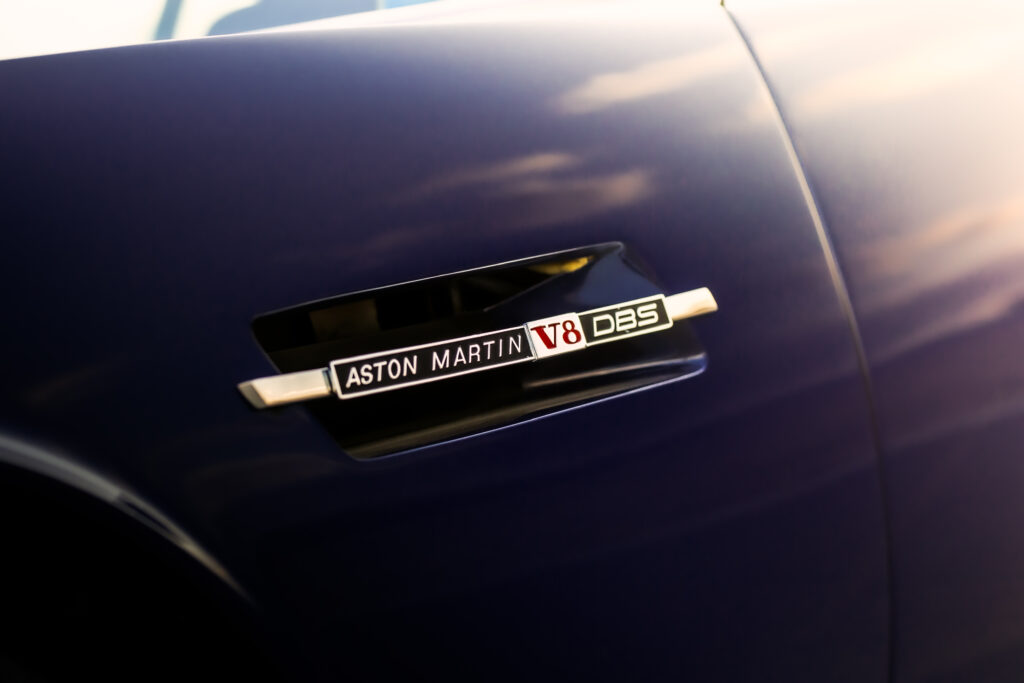
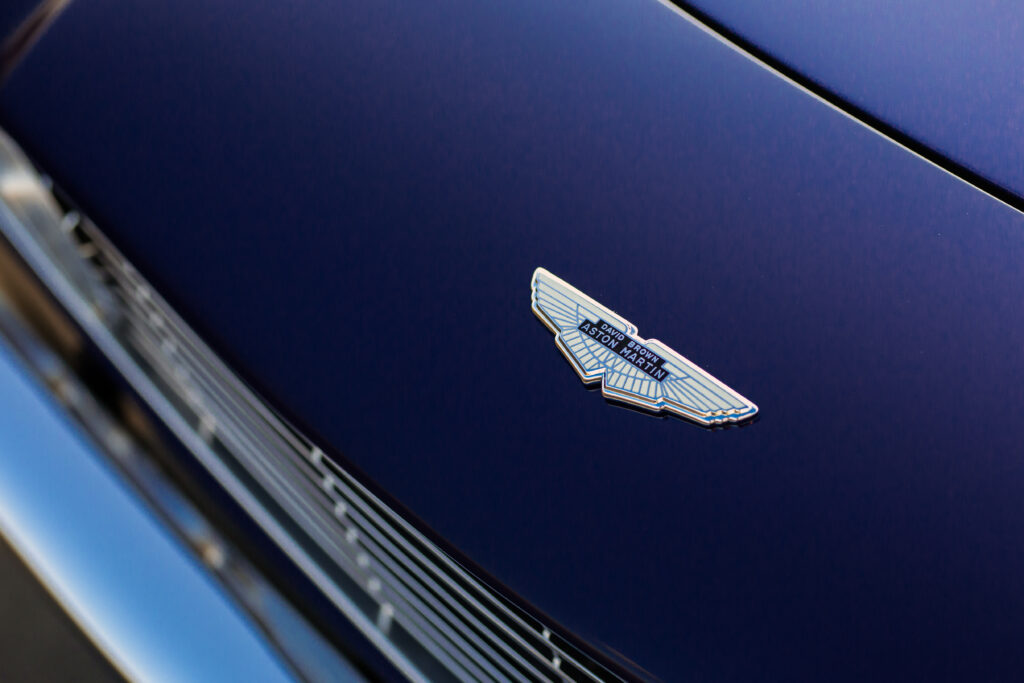
How much?
Early V8s like Martyn’s featured a Bosch mechanical fuel injection system. Once the car was back on the road, it was over-fuelling and running rough — the seals and whatnots clearly hadn’t appreciated the long downtime. The injection system was sent to a specialist in Hamilton and the overhaul racked up a bill that ran into the thousands. Martyn says the car ran better but not that much better.
It is worth noting that when the DB moniker was dropped in 1973, and the car was renamed the AM V8, Aston Martin also dropped the fuel injection system, reverting to Weber carburetion. These cars got a taller hood scoop and a new grille, which dropped the twin headlamp layout — a change that, incidentally, made them look more like a Mustang from the front as well as from the rear.
Another New Zealand owner with Bosch injection problems had gone to even greater lengths to try to get his Bosch system to work. One of the more esoteric parts of the system was a pressure pump that needed its oil changing every 500km. This other owner had sent his pump to Germany to have it reconditioned. It came back with a bill for $23,000, and the repair had no warranty.
This prompted Martyn to have a bit of a rethink, when the time eventually came to sort out his own car’s far from satisfactory fuelling. While following the factory’s lead and putting Webers on was tempting, someone had suggested installing a modern fuel injection system. A firm in Australia had developed one for this engine. At $7000 for the parts kit, it was a comparative bargain and offered the prospect of modern levels of refinement. It included a new high-pressure fuel pump, electrical throttle body, pipes, and a mass of sensors that needed plugging into the intakes and exhausts at different points.
Brackets had to be made for the pump but the most frustrating part, according to Martyn, was not having access to a baseline ECU program for the system. East City Auto Electrical installed the system but that added a year to the overhaul timeline. Then it still had to go to Motorsport Electronics, which, without a baseline map, had to spend about 40 hours setting up a tune.
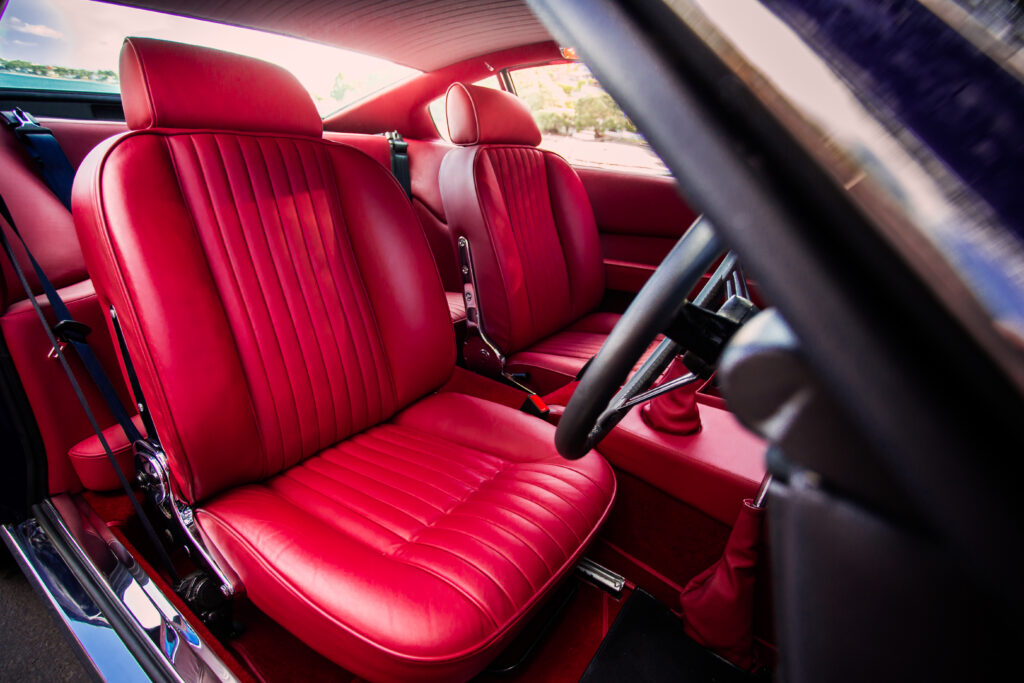

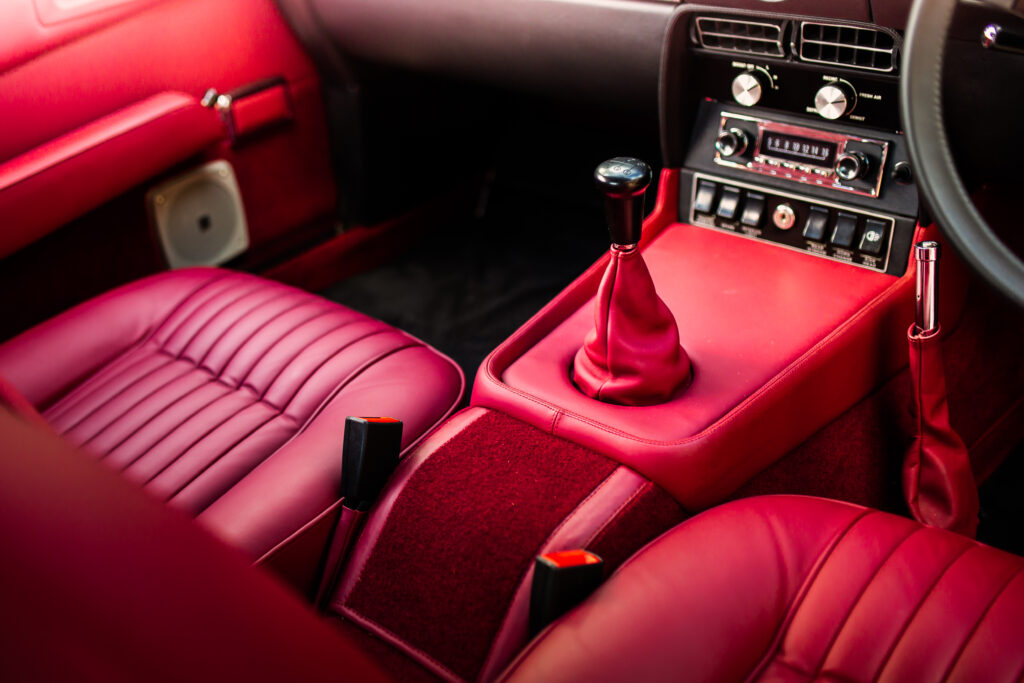
Coughing and burping
“But now it’s great,” Martyn reveals. “It’s very smooth. It doesn’t use a tank of fuel just to get over the harbour bridge. It’s no longer coughing and burping and farting. It will start hot or cold, and I don’t have to redline it to get it off the mark. It has completely transformed the car. I don’t have to deal with all that ‘character’ that it had before. I can now go on a club run and be sure I’ll get home again. I couldn’t do that before.”
Is Martyn satisfied now?
The project came very close to being spoilt. On one of Martyn’s few recent drives — he has only done 3000 miles in the car in 17 years — a stone dented the curved power bulge in the bonnet, right where the driver looks along it.
“Walking around the car most people would never notice it, but I knew it was there,” Martyn tells us.
Happily, during the car’s recent visit to KW Historics for service, Ken decided to call in a mobile dent service and, incredibly, they managed to pop the dent out. It’s now invisible.
“I nearly cried,” Martyn admits.
I also have to record that since these photos were taken the car’s painted alloy wheels have been refurbished. They looked fine to Martyn until he saw another restored car’s wheels at a car show. They went into Wheel Fix It, where the wheels were skimmed and the spoke areas repainted, bringing out their true beauty.


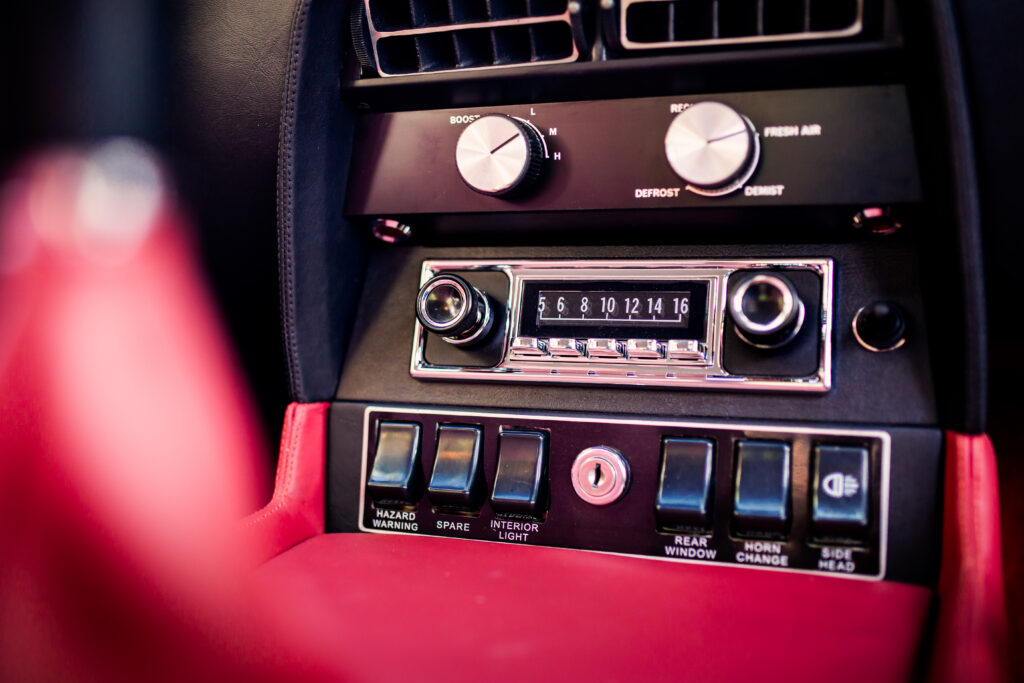
Workshop queen
That wasn’t quite the end of the Aston’s predilection for workshop visits. Now that the engine and everything else is in more robust health, more usable, and more fun, Martyn has been driving the car more. He noticed the clutch was slipping. That shouldn’t happen after so few miles but there was only one way to find out.
Guess how you get the gearbox out of an Aston Martin V8! Yes. Through the interior. Given the care and attention put into reassembling the car this was not an appealing option. However, with some creativity, Ken and Andrew at KW Historics made it work.
Martyn is now seriously hoping his car will go cold turkey on its garage addiction, and he can enjoy the fruits of all these labours. He can also draw some comfort from what has happened to other Aston Martin V8s over the same period.
“As luck would have it, their values have gone through the roof,” he says.
Martyn had the car valued after the restoration and it scored a solid $280,000 three years ago. A quick check on the internet for Astons for sale in the UK shows an asking price of £150,000, and much more, for early-’70s cars — all automatics
“I’m going to have to increase my insurance,” Martyn announces.



On the road again
As mentioned earlier Martyn has a range of other performance cars with which to compare the Aston. His stable includes a couple of Porsches, an E39 M5, and a more modern BMW but he says the Aston is easily the most characterful. Interestingly, he says if he could only have one car it would be the E39 M5 as it does everything so well, but when it comes to picking a favourite, the Aston wins hands down.
“The Aston has soul, character, and a personality that is addictive,” says Martyn.
“It’s got something like 325 horsepower, which isn’t a lot these days, but it’s still powerful.”
The first cars of this shape were known just as the DBS as the new engine wasn’t ready. Two years later V8 was added to the name to announce its new engine. Tadek Marek’s V8 was pretty advanced at the time, being all aluminum with double overhead cams and fuel injection, although just two valves per cylinder. It thrust the car to a genuine 160 mph in magazine tests (but not this one) and to 100kmh in less than six seconds. Interesting to note that when the Porsche 911 Turbo achieved similar figures five years later it was hailed as a ‘supercar’. Marek’s engine soon acquired another 16 valves and development continued until it produced 557bhp in twin-turbo form.
Sitting behind the wheel of what was intended to be one the finest cars of its era is definitely special. It’s interesting to note ashtrays and cigarette lighters everywhere, the chrome fittings and the leather trim covering almost everything. It’s easy to see where a good chunk of that money went. I’m pleased to see the crackle finish dashboard rather than wood holding the lovely old Smiths gauges. It looks more honest and more in keeping with the direct mechanical feel you get when driving it. The pedals are floor mounted which gives them an interesting feel but the clutch is light, given the torque it has to handle. The large wheel is appreciated when attempting to steer the pleasingly authentic balloon profile Avon tyres but the clutch engages sweetly and the car moves off easily in first. The only slightly tricky thing is remembering not to touch the button on top of the racing style fly-off handbrake.
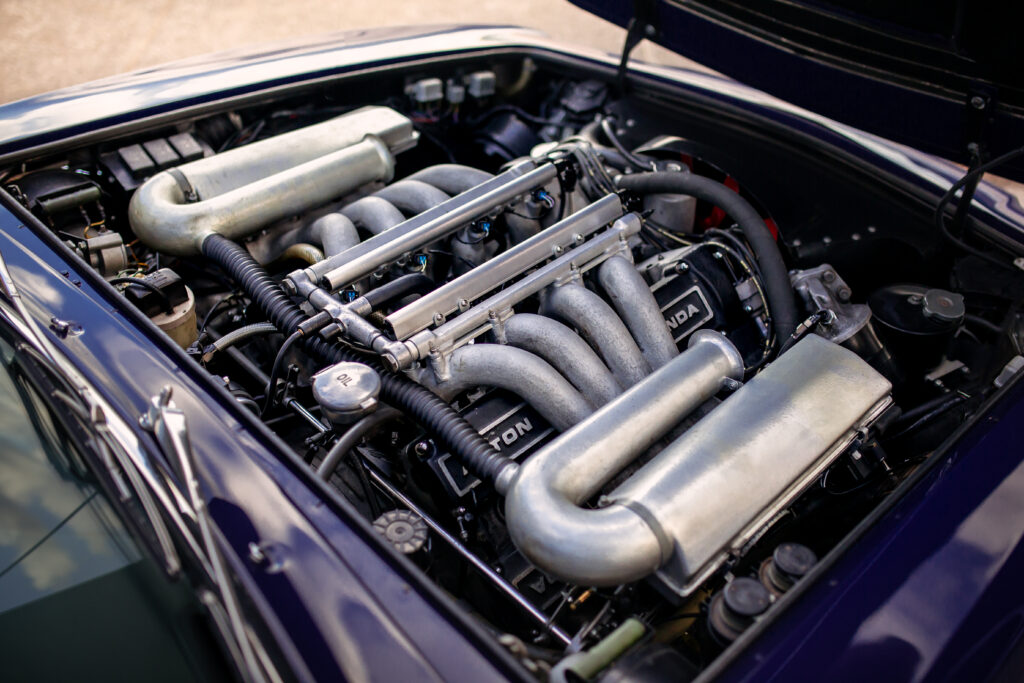

Flying off the handle
One of the great things about the Aston is that while it is undoubtedly a luxury car, you are not isolated from the mechanical bits. The gear lever keeps you physically connected to the workings inside it. The throws are longish, and the gear lever is mounted fairly high, but taking your time with it is a pleasure, and a blip on the downshifts induces a very slight rock in the body. Maybe I imagined it but it felt like it should do that. The engine is massively flexible so the car surfs along on plenty of torque but changing down and hitting the gas reveals the other side of its character. You get a throaty V8 roar, especially if the window is open, which it probably will be as the car doesn’t have air-conditioning. You are treated to a satisfying gathering of mass and momentum, and a whiff of petrol fumes, and you need to apply a bit more than usual brake pedal effort to gather it all in. It’s a heady mixture of luxury and rawness, slightly more than I was expecting given the car’s luxury looks, but that just makes it more of a proper Aston.
Martyn is pretty frank about its dynamic limitations in comparison with more modern fare. “The seating position’s not right and the steering wheel is like something from a bus. It is not so great by today’s standards at stopping or going around corners but none of that matters.
The Porsche 911 Turbo is good. It’s too damned good. When I’m at my limit I’m nowhere near the car’s limit, so you don’t get that feedback. In the Aston, it’s all analogue enjoyment. I just love it.”
